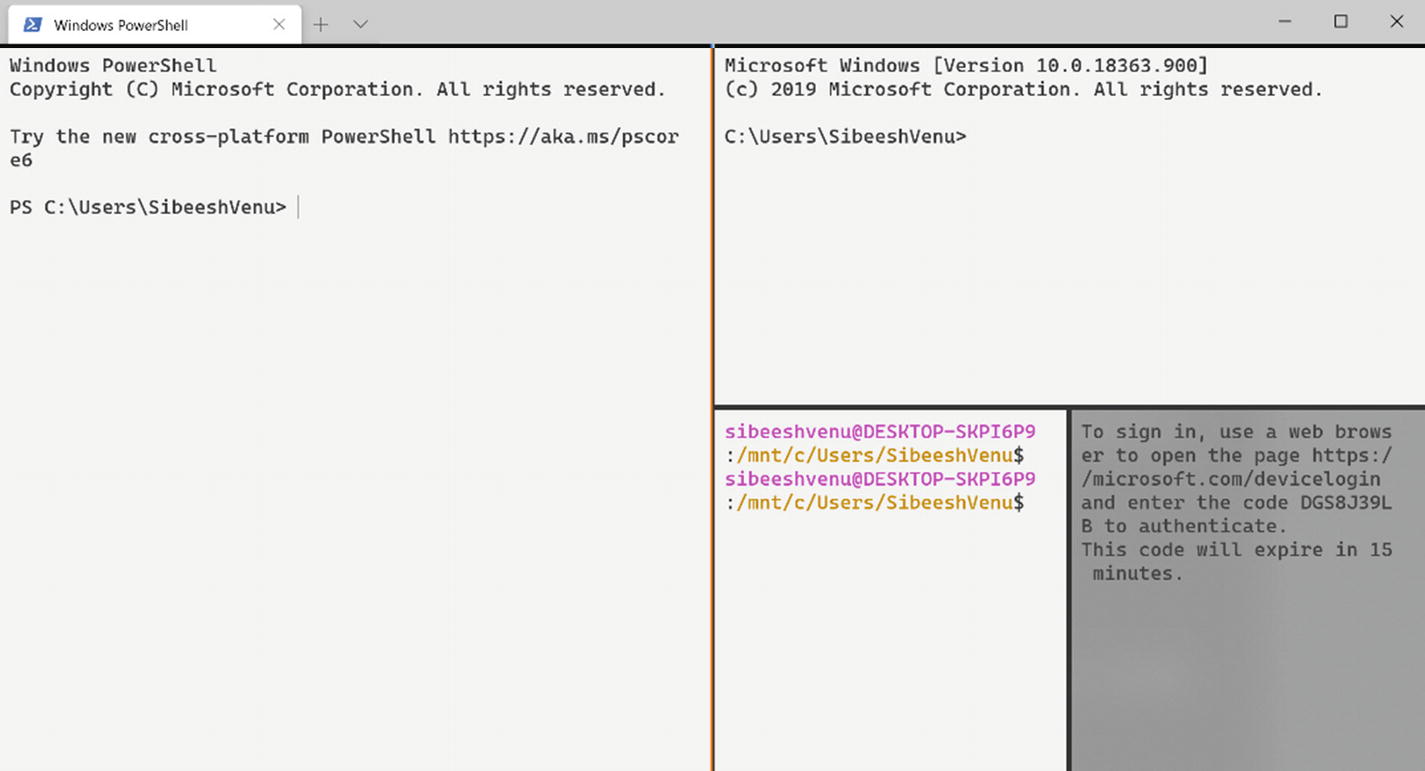In the last few chapters, you worked with your application and the IoT hub. In this chapter, I want to give you pro tip—using the Windows Terminal command-line tool, which you can customize. Yeah, you heard me right. In this chapter, I show how you can use and customize that tool. If you are not interested in using this tool, feel free to skip this chapter.
Using Windows Terminal

Windows Terminal install
Windows Terminal Key Features
Once you open Windows Terminal, you can see the fresh look of this new command-line tool. It has an updated UI and many new features, some of which we discuss next.
Support for Multiple Tabs

Windows Terminal’s multiple tabs
Support for Emojis, Icons, and More
With the new terminal, you can display text characters, glyphs, and symbols present on your windows, including emojis, powerline symbols, icons, and more.
Configuring Windows Terminal
Multiple profiles for each shell/app/tools you use.
Separate font styles, color themes, backgrounds, and transparency levels for each profile.

Windows Terminal settings
Now if you open the Ubuntu-20.04 shell, you’ll see that all the settings are updated. Note that the starting directory has changed as well.
Windows Terminal Preview Version
There is also a preview version of Windows Terminal, planned to be released in July of 2020. This version offers many other features. Let’s look at them now.
Open Folders in Windows Terminal
You can right-click any folder and select Open in Windows Terminal, which will launch Windows Terminal with your default profile in the directory you selected from File Explorer.
Font Weight Support
Support to Open a Profile as a Pane

Windows Terminal’s auto-split pane
Change the Tab Color

Windows Terminal tab colors
Rename a Tab
There is also an option to rename a tab. To do that, just right-click the tab and select Rename Tab. This will change your tab title to a textbox, where you can rename the tab for that terminal session.
Summary
What Windows Terminal is?
How to install Windows Terminal?
The key features of Windows Terminal.
How to customize Windows Terminal?
